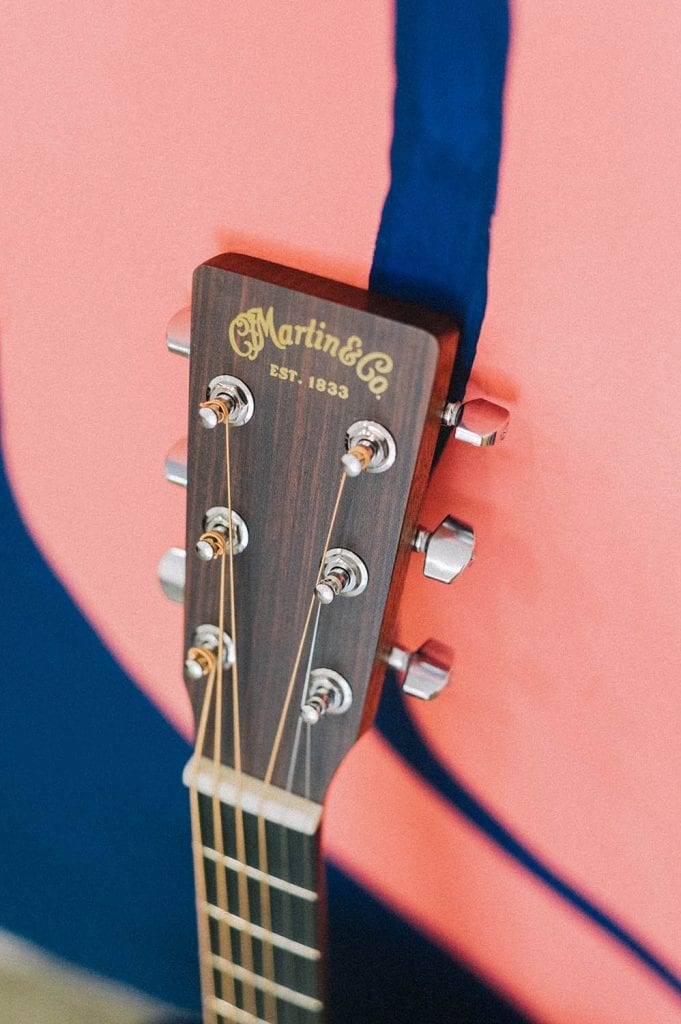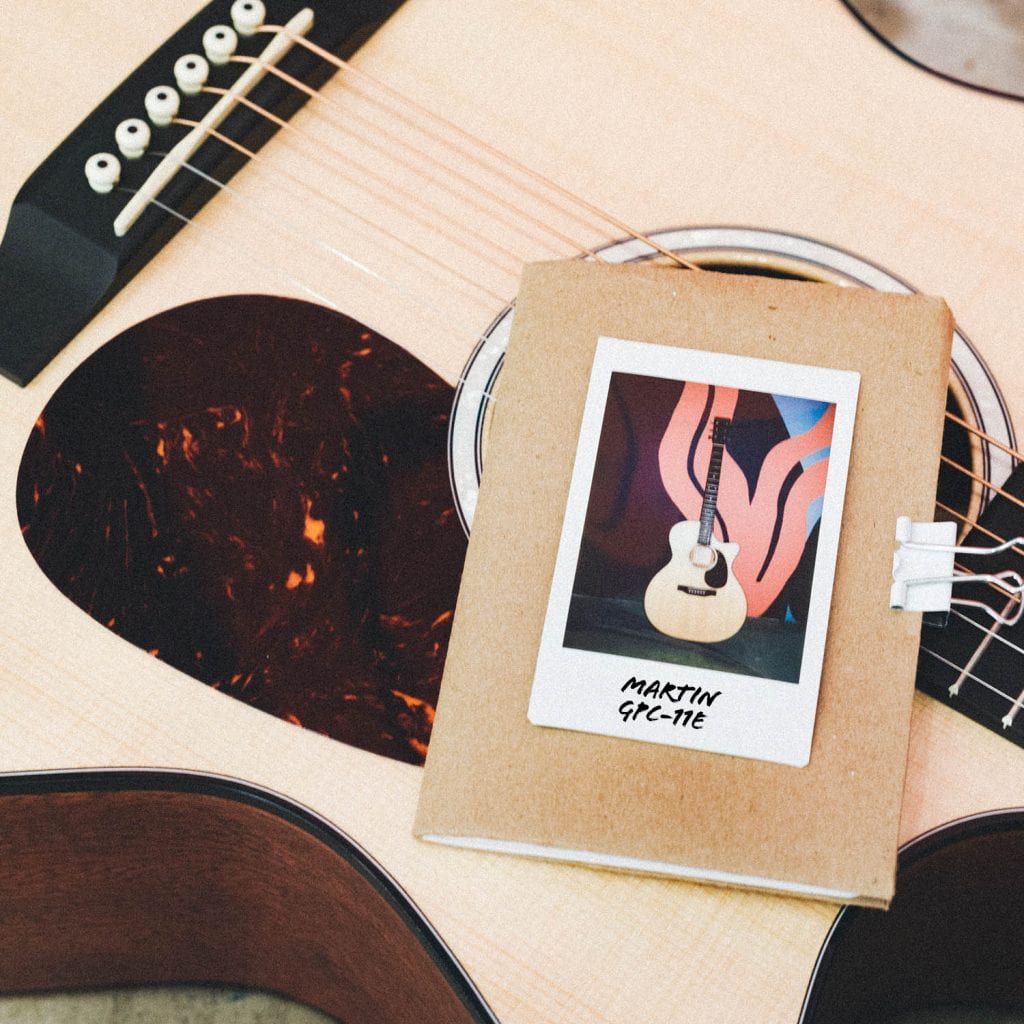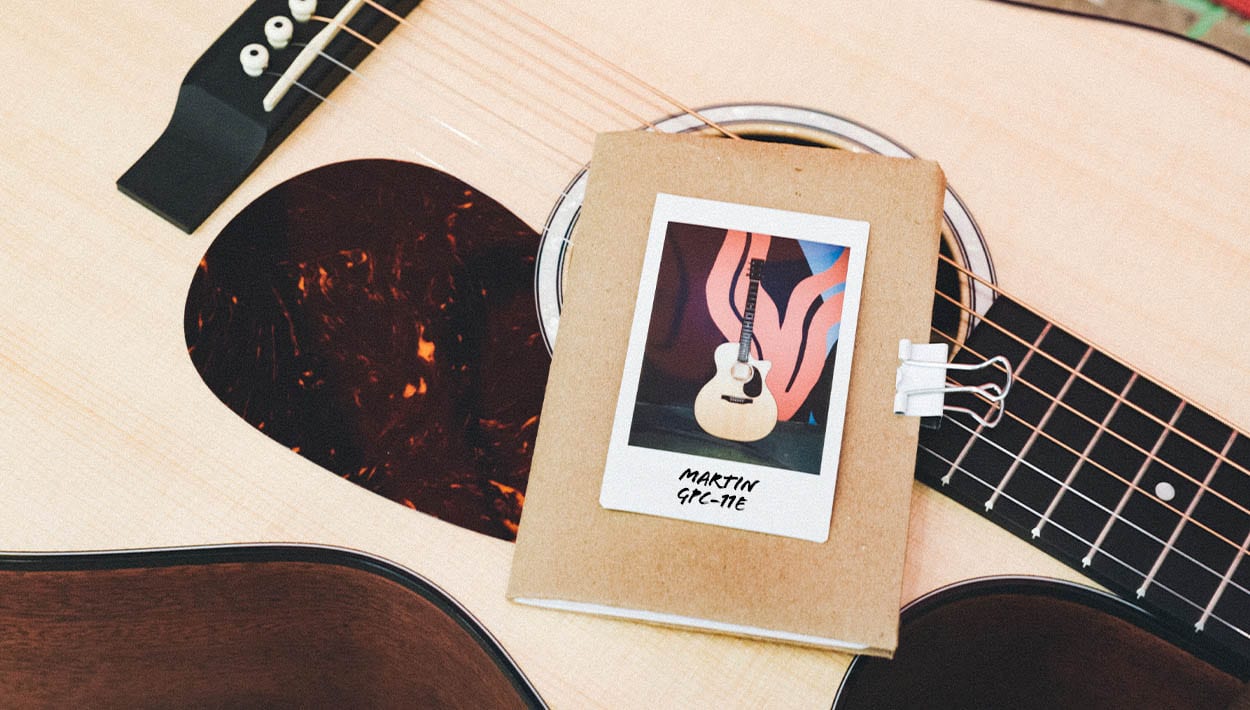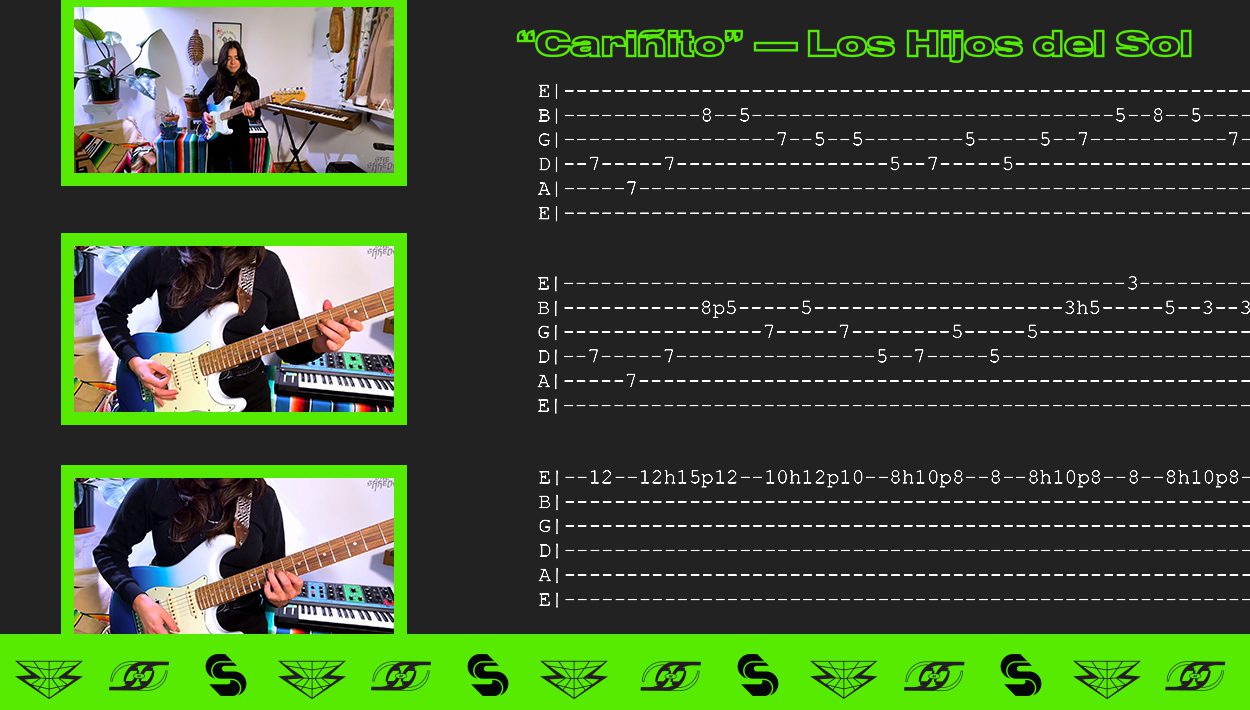The Martin GPC-11E Road Series Is In Line With Tradition
C.F. Martin and Co. have been producing some of the finest acoustic guitars available for more than 180 years. They have made significant contributions that help define the instrument into what it is today. Notable examples include the invention of the dreadnought and their use of “X-bracing.” Together these developments completely changed the entire industry.
Though they are steeped in tradition, they continue to innovate even to this day. Martin has a wide selection of guitars with different shapes, sizes, and materials available, suiting the needs of virtually any guitarist. The most prominent characteristics of what can be described as the “Martin sound” is the amount of projection, bass, clarity, and piano-like sustain that embodies their instruments, making them a popular choice with musicians across the globe.

The Road Series
The Road Series guitars represent an excellent value at a lower price point than their core lineup. While these guitars are a fine choice for anyone looking to invest in a high quality acoustic, they are exceptionally tailored to the needs of touring musicians who look for features such as an inspiring sound, overall comfort, solid wood construction, electronics suitable for gigging and recording, as well as a reliable case or gig bag.

Grand Performance, Unplugged
The GPC-11E is a grand concert sized acoustic guitar. It is a bit more compact when compared to the size of a dreadnought, yet it still offers a strong bass response and wide dynamic range. The narrow waist of the guitar shifts the extended lower bout in such a way that makes it very comfortable to hold for just about anyone.
The neck is joined at the 14th fret and the cutaway makes the upper notes easily accessible. Unplugged, the tone of the guitar is incredible thanks to the solid Sitka spruce top and sapele back and sides. The advantage that this provides is a guitar that can resonate all over because it is not hindered by stiffer laminated construction, which can be made up of several layers of wood “sandwiched” together.
Instead, the single layer of solid wood allows it to have a faster response to the vibrations induced by the strings, which in turn helps contribute to the amount of bass and sustain the guitar has. The top of the guitar is made of Sitka spruce which is known for its clarity and is a popular choice across many acoustic instruments. The back and sides are constructed of sapele which is often used as an alternative to mahogany due to its remarkable similarities both visually and sonically. The slightly absorbent nature of both of these woods is best characterized by strong fundamental responses with highs that are detailed yet soft enough to retain a nice amount of warmth.
Together, this combination of woods provides a sound that is very balanced and records well. I found the guitar to have a very generous amount of piano-like sustain that responded really well to how softly or loudly I played it. Every note popped without an excessive amount of brightness, and the overall character was quite inspiring. There is a certain warmth to the overall timbre of the instrument that is largely provided in thanks to thick bass that is present making it suitable for both solo pieces and within the context of a larger mix.

On stage and in the studio with the Fishman MX-T
At first glance you might not even notice that the guitar is equipped with any electronics at all because the majority of the Fishman MX-T system is cleverly hidden inside the sound-hole, making it practically invisible to the audience. This clever layout minimizes the amount of wood which is normally drilled away to make room for such things. Inside you will find a built-in chromatic tuner with an illuminated color display.
The display is nice and bright, but most importantly very easy to see with a quick response. Engaging the tuner bypasses the output of the guitar, making it easy to tune on stage without interruption while also giving you direct access to a built-in mute should you need to quickly turn off the guitar. The pickup captures all of the warmth and sparkle that this guitar has to offer and is controlled by one volume and one tone control located towards the top of the sound-hole.
The controls are just as easy to reach as the tuner and can be operated without even looking at them. These controls are useful for getting a good signal to noise ratio and fighting feedback when playing live as well as when recording direct in the studio. The battery compartment and the input jack are located towards the lower right side of the guitar.














Comments
[…] Size 1 model acoustic and the earliest X-braced guitar ever documented. As stated in an earlier article on She Shreds, the X-braced system used in early Martin guitars influenced the entire acoustic […]
Pingback by She Shreds Media on June 12, 2020 at 12:16 pmAwesome review! Thank you for the info!
Comment by Mark on October 11, 2022 at 6:33 pmVery cool! I travel a lot by car and I love listening to music on the road, it makes my trip even better. Recently, my friends and I went on a long road trip around the UK. We booked a 9-seater car here https://rental24.co.uk/uk/group/9-seater and travelled around the country in it for about 2 weeks
Comment by anna on December 14, 2023 at 10:18 am